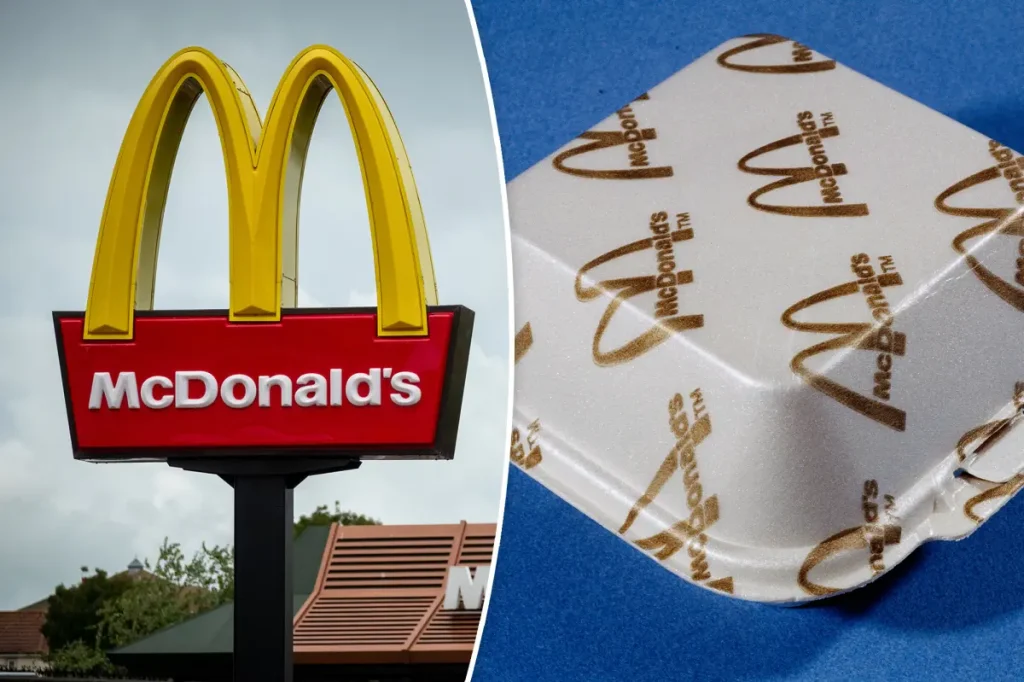The Quarter Pounder That Defies Time: A 30-Year-Old McDonald’s Burger’s Unlikely Journey
In the realm of bizarre keepsakes, Casey Dean and Eduards Nits possess what might be the world’s oldest McDonald’s Quarter Pounder—a burger that has remained remarkably preserved for nearly three decades without refrigeration. Nicknamed the “Senior Burger,” this peculiar piece of fast-food history will celebrate its 30th birthday this November, having been purchased from an Australian McDonald’s back in 1995. Despite spending decades stuffed in cupboards, garbage bags, and sheds, the burger appears eerily intact—no mold, no foul odor, just a shrunken, dehydrated version of its former self. “It no longer looks like a hamburger,” Nits explained to SFGate. “It’s no longer food. It just looks like artwork.” This remarkable preservation has transformed a simple Quarter Pounder into something that Nits, now a bricklayer in Adelaide, believes belongs in a gallery or museum.
The preservation of the burger challenges our understanding of food decay, though McDonald’s has offered an explanation for this phenomenon. While many internet myths suggest McDonald’s burgers contain mysterious preservatives that prevent decomposition, the fast-food giant clarified in 2020 that the longevity is likely due to dehydration in a dry environment, which inhibits mold and bacterial growth. “Food prepared at home that is left to dehydrate could see similar results,” the company stated. Former McDonald’s chef Mike Haracz, who spent four years as a manager of culinary innovation for the US menu, has also debunked the preservation myth on his TikTok channel, insisting that McDonald’s burgers do indeed break down naturally under normal conditions. What makes the Senior Burger special isn’t necessarily its ingredients, but rather the unique circumstances of its storage that have allowed it to become a time capsule of sorts.
The burger’s existence as a keepsake was never intentional but rather the result of a teenage promise that spiraled into a decades-long commitment. The story began in 1995 when 14-year-old Dean won a local battle of the bands contest. After a recording session, Dean, Nits, and a friend visited a McDonald’s drive-thru on their way to a house party. When their friend couldn’t finish eating, they asked Dean and Nits to hold onto the burger until their next visit. That friend never returned, but Nits kept his word with remarkable dedication. When his mother insisted he throw away the stale food sitting on his desk, the stubborn teenager simply hid it in a cupboard. “I put it in a box and shoved it in the cupboard so she wouldn’t find it,” Nits recounted. What began as adolescent defiance gradually transformed into something much more significant as the burger hardened and its peculiar preservation became apparent.
As time passed, the Senior Burger evolved from teenage rebellion into a family treasure with its own colorful history. Nits’ mother, a teacher, eventually embraced the oddity and brought it to school to show her students. When Nits later moved to Europe, the burger found a new guardian in his sister, whose husband’s military career meant the Senior Burger “followed them around Australia” as the family relocated every three years. The burger’s fame has spread well beyond the family circle—it has been featured on Russian television and local news outlets and even caught the attention of popular podcast host Joe Rogan. What started as a simple forgotten meal has transformed into a conversation piece that connects people across generations and cultures, becoming something of a pop culture artifact that documents not just food preservation but human attachment to unlikely objects.
Despite its impressive longevity and growing notoriety, the Senior Burger faces challenges in receiving formal recognition as the world’s oldest Quarter Pounder. Dean and Nits lack the original receipt—a requirement for Guinness World Records verification—though Dean argues that the distinctive beige packaging from 1990s Adelaide McDonald’s should serve as sufficient proof of its age. “That’s better than any receipt, as far as we’re concerned,” Dean insisted. The duo even attempted to have universities carbon date the burger, but were told it needed to be at least 5,000 years old for such testing—a benchmark the Senior Burger won’t reach for quite some time. Despite these setbacks in official recognition, the burger’s owners remain dedicated to its legacy, creating social media accounts to document its journey and planning for its future custodianship.
The Senior Burger represents something more significant than just a curiosity or potential world record—it has become a unique inheritance with its own lineage. Dean has already begun coaching Nits’ children to become the next bearers of this unusual family heirloom. This passing of the torch highlights how objects, even something as mundane as a fast-food burger, can transcend their original purpose to become vessels of shared history and connection. The Quarter Pounder’s journey from a simple meal to a preserved artifact speaks to human fascination with the passage of time and our desire to hold onto tangible pieces of the past. As it approaches its third decade of existence, the Senior Burger continues to captivate imaginations, raising questions about preservation, consumption, and the unexpected ways we create meaning around everyday objects. Whether it ever receives official recognition or not, this unassuming Quarter Pounder has already secured its place in the annals of peculiar human collections and unusual friendships.


